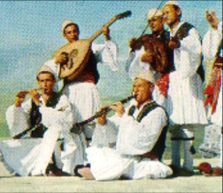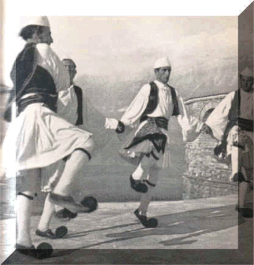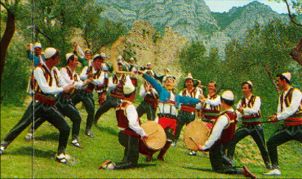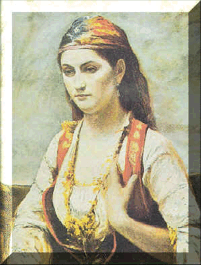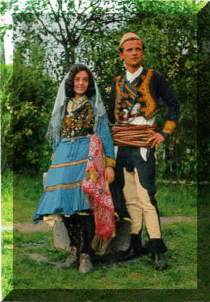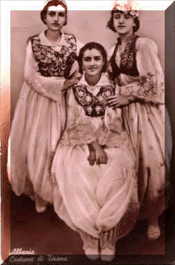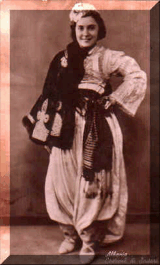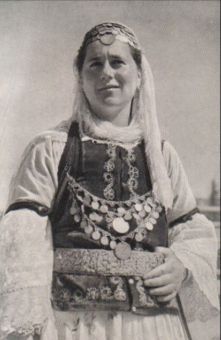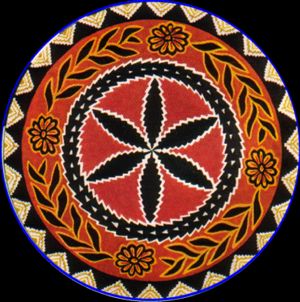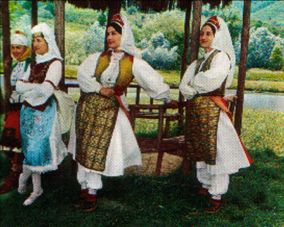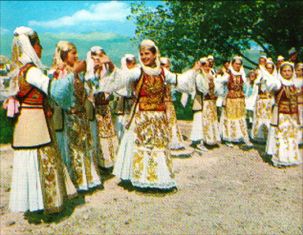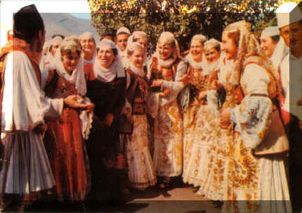|
|
||
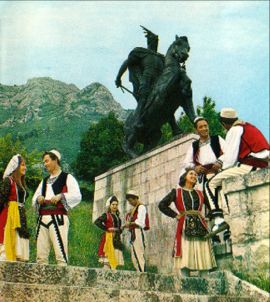
Popolar Costums
Danza Popolare
Gruppo folkloristico
South Albania popular dance
North Albania typical dance
G. Coeot, "Albanian Woman"
Shkodrė - Popular Customs
Tiranė - Popular Customs
Shkodrė - Popular Customs
Dropulli ( South Albania ) Popular Customs
|
The popular art is undoubtedly a symbol of the Albanian peoples life and history. In the dances, the music, the customs, the past is fully celebrated. The popular dances, accompanied or less by music, are numerous and often regard episodes and historical events, in the North and in the South. In the occasion of the festivities, the weddings, in the mountainous zones of the North, people dance the " Logu " , that shows the phase of the courtship, the woman escape to the man who tries to put an arm round her shoulders, and in the end she surrenders and fall in a warm embrace. Sometimes the " Logu " includes variations of the " Kėrcimi me Shpata ", the " dance of the swords ", epic commemoration of the medieval duel. In the North also it is also diffused the Vallja and Kukėsit " , the dance of Kukės ", that takes its origins by the name of the city. The songs exalt the valorous feats of the national
legendary heroes or of the leaders of the
several popular uprisings. It
turns out almost superfluous adding that the figure of Skanderbeg is the
most celebrated. The songs
are usually accompanied by traditional instruments, as the flute.
From the tunes dedicated to the beauty of the nature, passing to
the war songs, often executed with the accompaniment of the lute or of
two strings instruments, the wedding songs , the parting songs, the
nursery rhymes , Albanian music fiercely shows its popular roots. The " Aheng " is an ancient vocal and
instrumental music particularly diffused in the whole state.
The songs of the South are different from those of other regions,
especially the harmony and the melody:
they are normally executed by a chorus where the coryphée is
distinguished, with its tonality, from the rest of the group, that
accompanies the song with
inarticulate sounds. The
ambassador in all Europe of this particular and fascinating music
is the " Famille Lela a group of musicians of Pėrmet, a
city of the South.
Lord Byron described the Albanian popular customs as
the most beautiful that he had never seen.
They introduce indeed a great variety of shapes, colours,
ornaments that vary from region to region, from city to city, often from
village to village. And it
is in the villages, that the customs have mainly been conserved along
with the archaic vestiges of this ancient civilization.
The ages of the ferocious Ottoman occupation, the sufferings, the
great migrations, characterize some popular dresses , as the "
Xhokja e zezė ", a black waistcoat that symbolizes the mourning
carried by the Albanian people after Skanderbegs death.
The most original dresses are the " Xhubleta " (typical
feminine waistcoat of the zones of the North), that goes back to the
Creto- Mycenaean age, and the " Xhoka " ,
part of the feminine customs diffused in all Albania in its
twenty variations , that gets its origins from the Thracian Illyric
culture. During the
festivities, the men wear the " Fustanella " (male variation
of the xhoka, moreover symbol of economic comfort) the " Tirqė
" (adorned and adherent pantaloon) or the " Brekushė " (rudimentary
slacks, that during the feudal period expressed a low social standing, a
state of submission and vassalage).
The feminine customs are particularly charming.
The patterns of the ancient customs are usually geometric ,
probably originated from the Albanian native populations, even if floral
patterns, influenced by the Byzantine culture, are equally diffused.
------------------------------------
" the passion of the Glory is the dominant
characteristic of the Albanians. Their
genius is poetic as their customs;
their popular songs, above all those of the heroic age of
Skanderbeg, remember Homer's songs... they fuse, like Achilles, the
poetry with music and dance. Their
feudal organization (the code of the Mountains) does not lessen at all
the feeling of general freedom and the patriotic passion, the
noblest patrimony of the Albanians.
" ALPHONSE DE LAMARTINE
------------------------------------
Plate decorated by typical patterns
Female Popular Customs
Female Popular Customs
Popular Customs |
|


